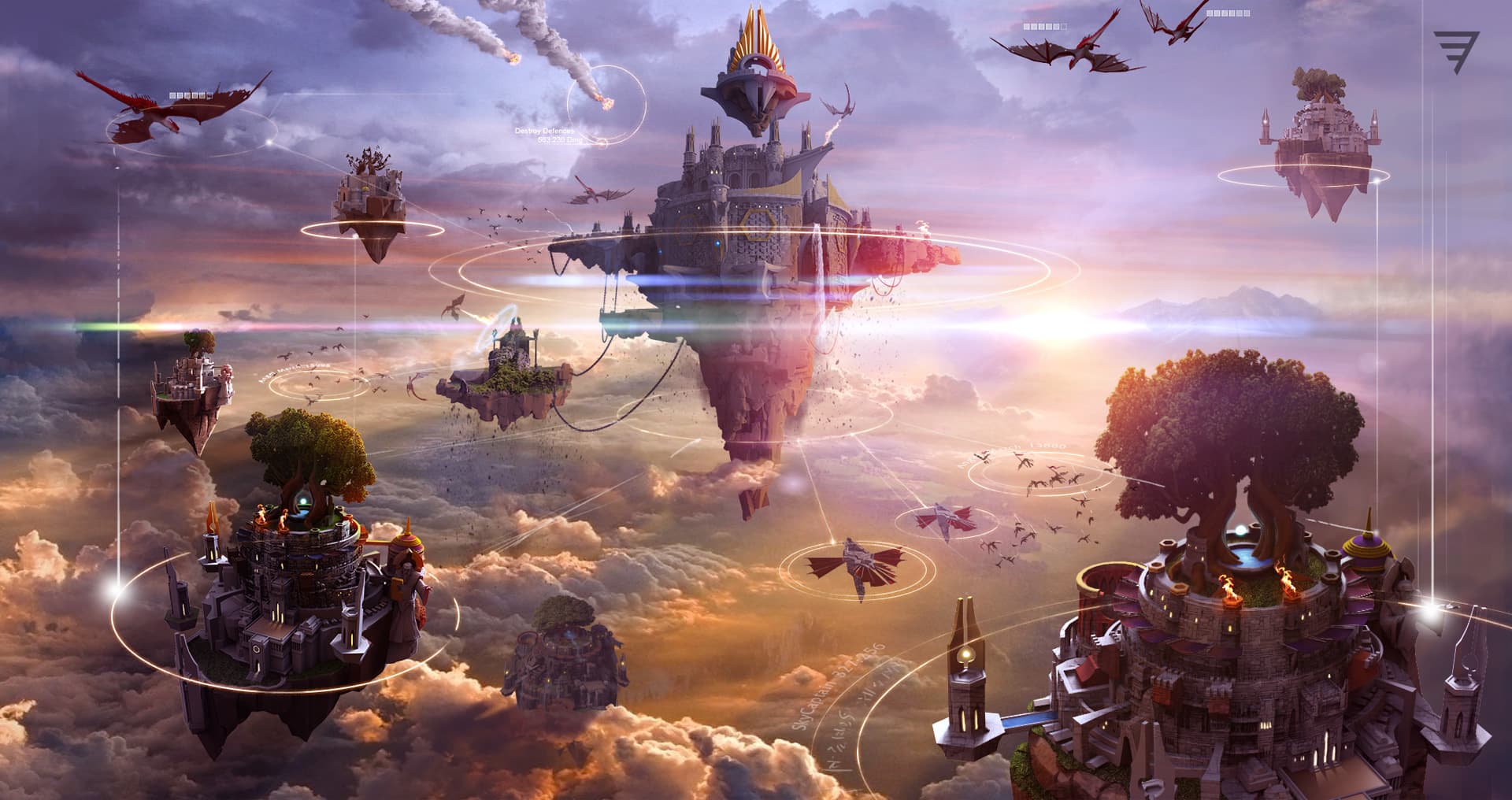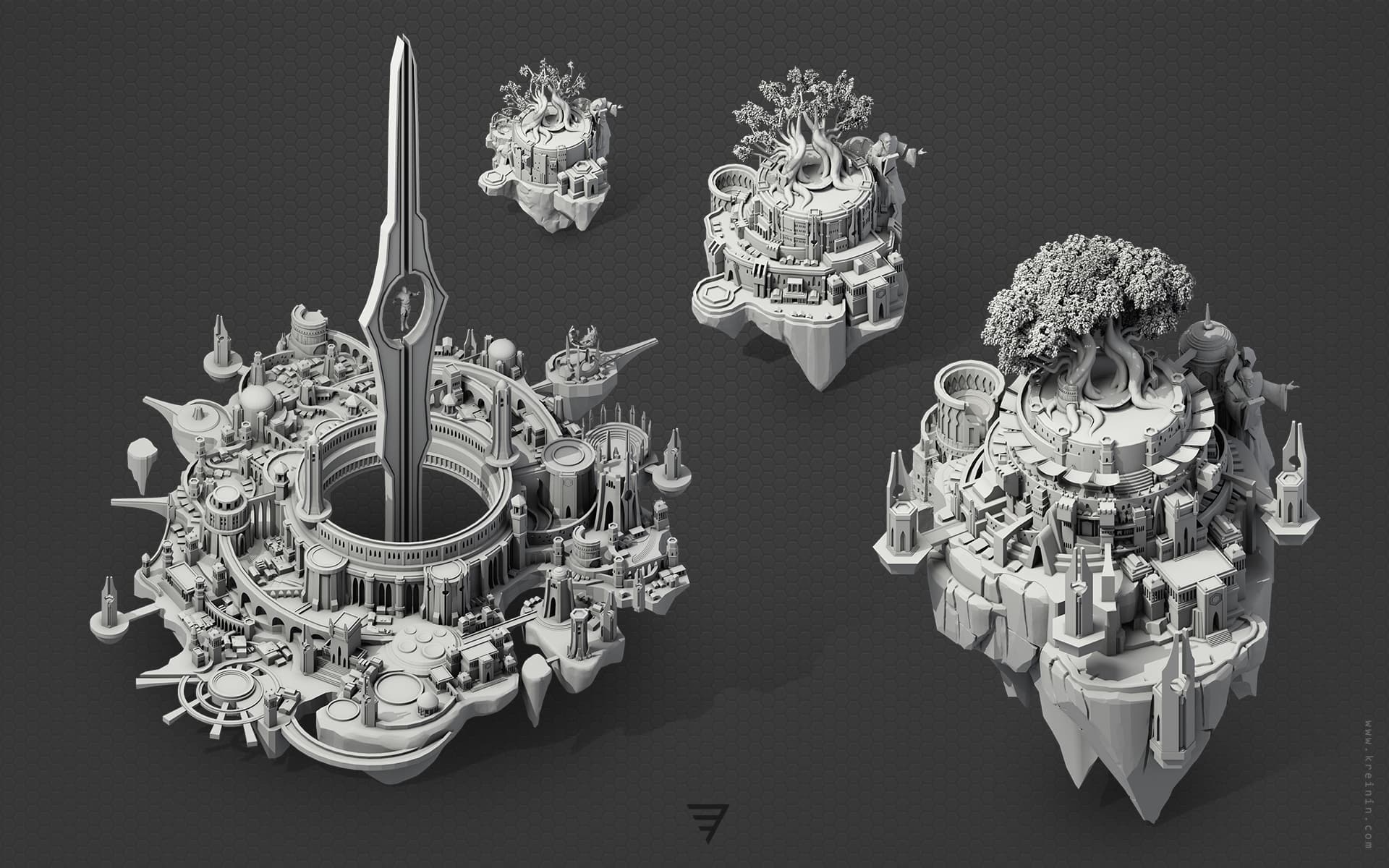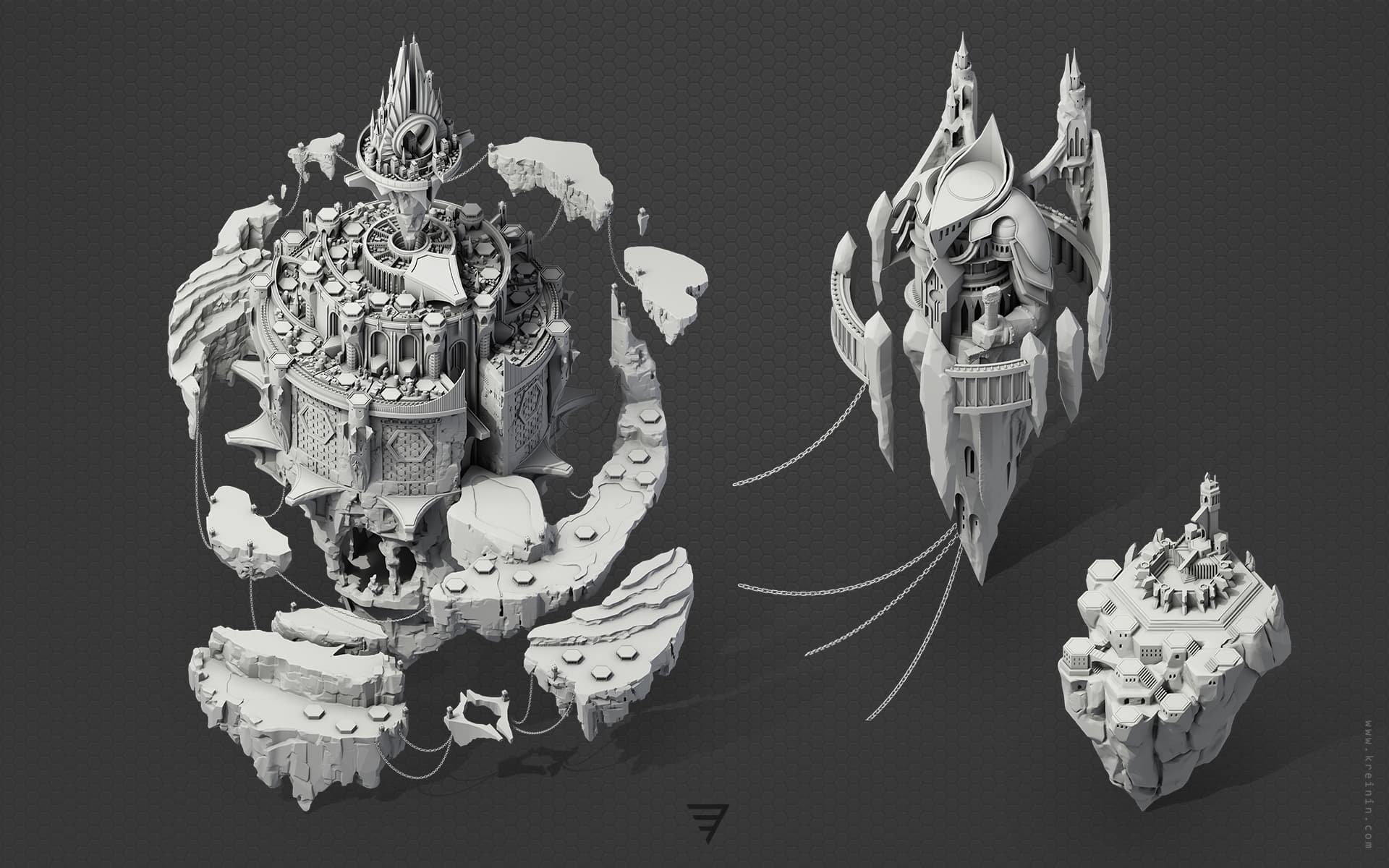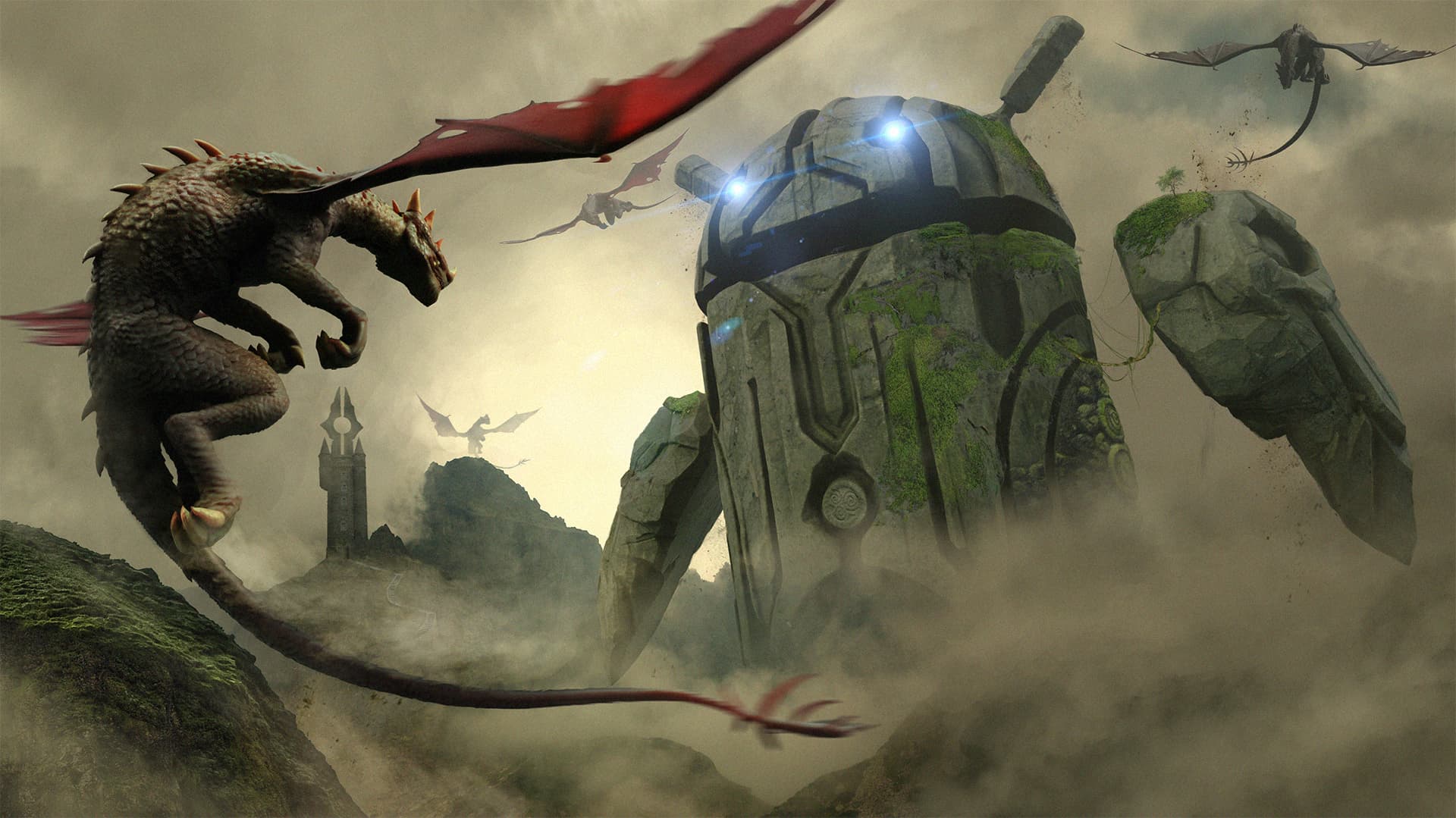How to Design Game Worlds That Pull Players In and Won’t Let Go
Ever found yourself lost in a game world so rich, so alive, that you forgot about everything else? One moment you're creeping through a foggy forest, the next, your heart's racing as a shadow moves just beyond your torchlight. That's the power of immersive game worlds — it doesn't just look good, it feels real.
At Asterman, we believe that crafting that level of immersion isn’t just about fancy graphics. It’s about creating a world that breathes, reacts, and whispers its stories to the players. Whether you're looking for game level design tips or want to know how to create game environments, we’re here to help you build unforgettable worlds. So, let’s dive into what makes a game not just visually stunning, but truly unforgettable

What Makes a Game World Truly Immersive?
Immersion is a carefully woven illusion. It’s the art of making players forget they’re pressing buttons and instead believe they’re inside the world you’ve built.
- Visuals That Set the Mood - The neon-soaked streets of Cyberpunk 2077 scream chaos and rebellion. The overgrown ruins of The Last of Us whisper loneliness and decay. Every color, shadow, and particle of dust plays its part. But it’s not just about lighting and textures — game environment assets like scattered debris, flickering neon signs, or creeping vines reinforce the world’s tone and history.
- Sound That Pulls You In – The crunch of footsteps in the snow, the echo of distant gunfire, or the sudden silence before danger — sound design isn’t just background noise; it’s the soul of the world.
- A World That Reacts – Knock over a table, and the bottles should roll. Leave footprints in the sand, and the wind should slowly erase them. In Red Dead Redemption 2, NPCs remember what you did yesterday. Hire game environment artists to build a living world.
- Story Woven into the Landscape – Ever found a skeleton slumped against a wall in Dark Souls and wondered what happened? That’s storytelling without words. Great worldbuilding makes exploration feel like unraveling a mystery.
- 2D vs 3D game environments — Whether a game is built in 2D or 3D, the key to immersion lies in how the world is designed and presented, it’s about what best serves the story, gameplay, and emotional impact of the world you’re creating.
How to Build Worlds That Players Never Want to Leave
1. Let the World Tell Its Own Story
A truly immersive world feels like it existed long before the player arrived. Picture an old, deserted tavern. Dust clings to overturned chairs, a fireplace still holds the charred remains of a forgotten fire, and a half-written letter sits abandoned on the counter. Why was it left unfinished? What happened here?
Instead of long-winded dialogue dumps, let the world itself be the narrator. A locked door with scratches around the keyhole suggests someone tried to get in — or out. A toppled goblet and a broken dagger tell a story of a fight that ended too soon. At Aterman, while working on games we constantly remind ourselves that the best-designed environments don’t just look good; they make players ask questions.
2. Guide Players Without Holding Their Hand
Ever wandered through a game where every turn felt natural, like you instinctively knew where to go? That’s smart level design. Instead of arrows and waypoints plastered on the screen, use the world itself as a guide. A distant tower, glowing softly under the moonlight, draws the player forward. A well-placed beam of sunlight highlights an important path. Naughty Dog, the studio behind The Last of Us and Uncharted, has mastered this technique — directing players without them even realizing it.
Big, open spaces can feel empty without the right design. The trick? Break them up. A massive desert is just a sandbox unless you scatter oases, ruins, and winding trails that make it feel real. The same goes for cityscapes — alleyways, street markets, and vertical movement create a sense of space that feels dynamic instead of repetitive.
3. Make the World React to the Player
A world that doesn’t respond feels like a movie set — nice to look at, but lifeless. At Asterman, we believe that players should feel like their actions leave a mark, whether it’s footprints in the snow, a shattered window that stays broken, or NPCs who remember past interactions.
In Red Dead Redemption 2, shopkeepers close up at night, townsfolk recognize you if you’ve helped — or wronged — them, and horses get muddy when galloping through the rain. These small touches make the world feel not just like a backdrop, but a place that exists beyond the player’s actions.
Weather and time play their role too. A sudden thunderstorm should make roads slick and dangerous. A thick fog rolling in at dawn should change how players navigate. The more dynamic the world, the more real it feels.
The Tools: Bringing Worlds to Life
- Game Engines – Unreal Engine and Unity bring worlds to life with stunning graphics and physics.
- 3D Modeling Software – Blender, Maya, and Houdini help craft detailed environments.
- Procedural Generation vs. Handcrafted Detail – No Man’s Sky uses procedural generation for endless worlds, while The Witcher 3 handcrafts every village and valley for a deeply personal touch.
- Optimization Tricks – Too much detail can kill performance. Smart use of LOD (Level of Detail), occlusion culling, and baked lighting keeps things running smoothly.


Avoid These Immersion-Killing Traps
Even the best-designed worlds can fall apart with a few bad choices. Overdesigning can be just as harmful as underdesigning — too much detail can overwhelm, while cluttered environments can feel unnatural. Navigation is another pitfall; if players constantly get lost, frustration replaces immersion. Smart world design guides them intuitively without making them feel like they’re on rails.
Then there’s the matter of consistency. A hyper-realistic city next to a cartoonish NPC? Instant immersion breaker. Everything — from textures to character models — needs to feel like it belongs to the same world.
Hire Asterman to Craft Worlds That Players Can’t Stop Thinking About

The best game worlds don’t just entertain — they transport. They pull players into unforgettable experiences, making them lose track of time, fully immersed in every sound, shadow, and story. The worlds that stay with us long after we’ve put down the controller are the ones crafted with passion, precision, and a deep understanding of what makes a game feelalive.
At Asterman, that’s exactly what we do. As one of the experienced game art outsourcing companies, we specialize in creating breathtaking 2D & 3D game art, immersive cinematics, and dynamic animations. Our team of expert artists, designers, and developers is dedicated to building rich, detailed worlds that captivate players. Whether you need high-quality assets or a full-scale game environment outsourcing solution, we’re here to bring your vision to life.
Let’s build extraordinary worlds together — reach out to Asterman, and let’s make something unforgettable!

